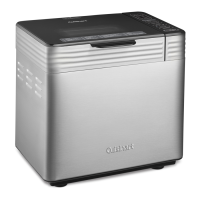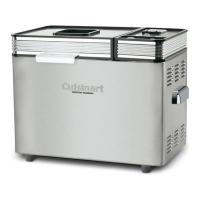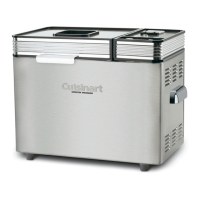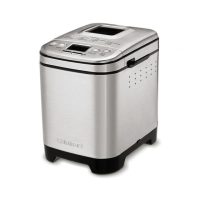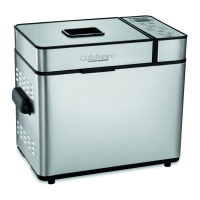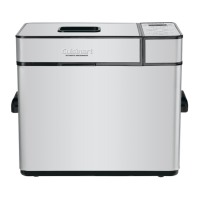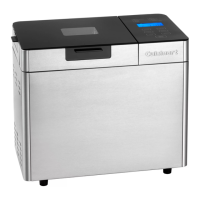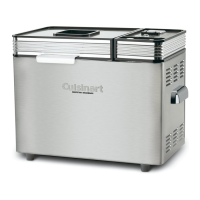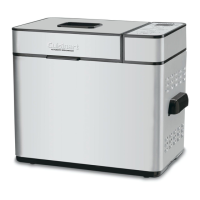13
TIPS AND HINTS
INGREDIENTS
The most important rule of making bread: Use exact measurements. This is the key to successful bread baking.
NOTE: Removing the kneading paddle is an optional step. See page 8 for more details.
For the most consistent results, use a digital scale to weigh ingredients for the recipes in this booklet, since even
a tablespoon (8 g) of flour or water can change the final quality of the item. The recipes included with this bread
maker have all ingredients listed by both weight and volume, but we recommend to always weigh ingredients.
When measuring wet ingredients via volume, use only liquid measuring cups with clearly marked measurements
on the side. Always measure on a flat surface and view the measuring cup at eye level to make sure the amount
of liquid is exact.
If measuring dry ingredients by volume, always give a good stir of the dry ingredients before measuring.
When ready to measure, fill a dry measuring cup with a spoon and then level off the top of the cup
with the back of a knife or a spatula. Never use the cup to scoop the ingredients directly from container.
Do not pack down, unless otherwise noted.
Most recipes require all ingredients to be at room temperature, unless otherwise noted. Always use fresh,
top quality ingredients.
MEASUREMENTS, CAPACITIES, AND SUBSTITUTIONS
In general, a 2-cup (500 ml) white flour (all purpose or bread) recipe will produce a loaf that is about 1 pound
(454 g), a 3-cup (750 ml) flour recipe will produce a loaf that is about 1½ pounds (680 g), and a 4-cup (1 L)
flour recipe will produce a loaf that is about 2 pounds (907 g). Some recipes will have slightly larger or smaller
amounts of flour for each size, and with mix-ins, they may weigh more.
You should not use more than 4½ cups (1.125 ml) all-purpose/bread/whole wheat flour total in the bread
machine.
If you are adapting a recipe, and your mathematical measurements become an odd amount, such as half an
egg, whisk your egg well and then measure out half. A large egg is generally equal to about ¼ cup (60 ml).
Don't be tempted to omit ingredients, even when they're in amounts as small as ¹⁄
8 teaspoon (0.5 ml). Baking is
chemistry, and changing the formula by even this small amount can change the final product significantly.
AUTOMATIC MIX-IN DISPENSER
The Automatic Mix-in Dispenser holds up to ¾ cup (175 ml) of your favourite mix-ins. We recommend that
you roughly chop nuts, dried or fresh fruit (if larger than a dried cherry), and larger herbs. If using ingredients
that are fresh (as in not dry in nature or touch), toss in flour or cornstarch to aid in the dispensing process.
When preparing 2 pound (907 g) loaves, we recommend that you close the Automatic Mix-In Dispenser
door after the mix-in tone has sounded, even if no mix-ins are being used.

